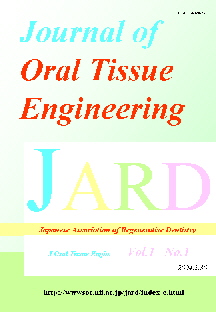Volume 4, Issue 1
Displaying 1-8 of 8 articles from this issue
- |<
- <
- 1
- >
- >|
ORIGINAL ARTICLES
-
2006Volume 4Issue 1 Pages 1-8
Published: 2006
Released on J-STAGE: November 30, 2006
Download PDF (863K) -
2006Volume 4Issue 1 Pages 9-16
Published: 2006
Released on J-STAGE: November 30, 2006
Download PDF (639K) -
2006Volume 4Issue 1 Pages 17-24
Published: 2006
Released on J-STAGE: November 30, 2006
Download PDF (1191K) -
2006Volume 4Issue 1 Pages 25-31
Published: 2006
Released on J-STAGE: November 30, 2006
Download PDF (1072K) -
2006Volume 4Issue 1 Pages 32-36
Published: 2006
Released on J-STAGE: November 30, 2006
Download PDF (437K) -
2006Volume 4Issue 1 Pages 37-42
Published: 2006
Released on J-STAGE: November 30, 2006
Download PDF (1093K) -
2006Volume 4Issue 1 Pages 43-50
Published: 2006
Released on J-STAGE: November 30, 2006
Download PDF (673K) -
2006Volume 4Issue 1 Pages 51-56
Published: 2006
Released on J-STAGE: November 30, 2006
Download PDF (905K)
- |<
- <
- 1
- >
- >|
